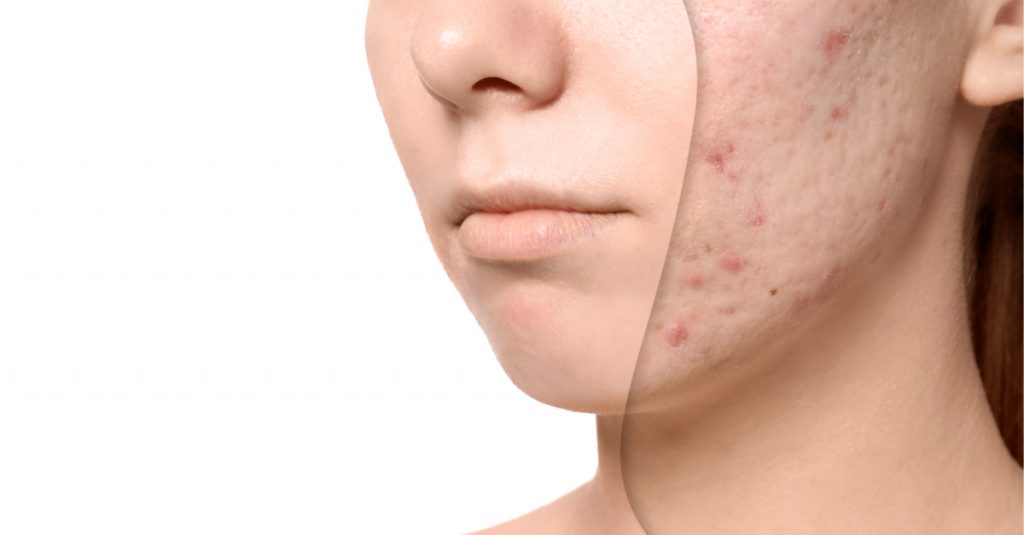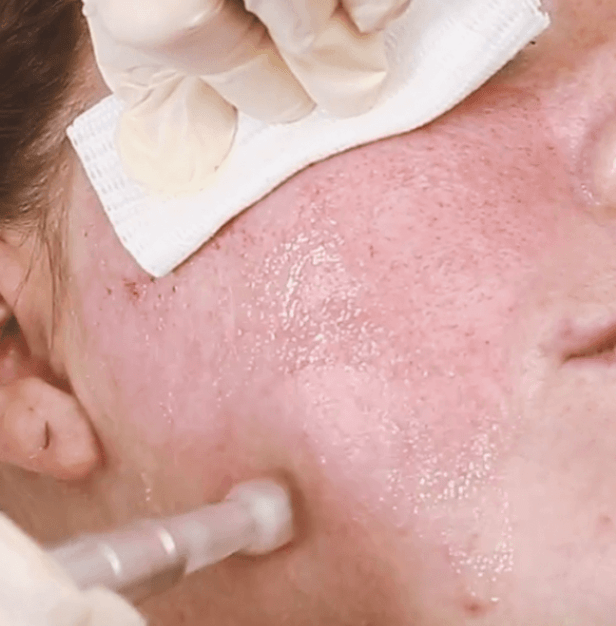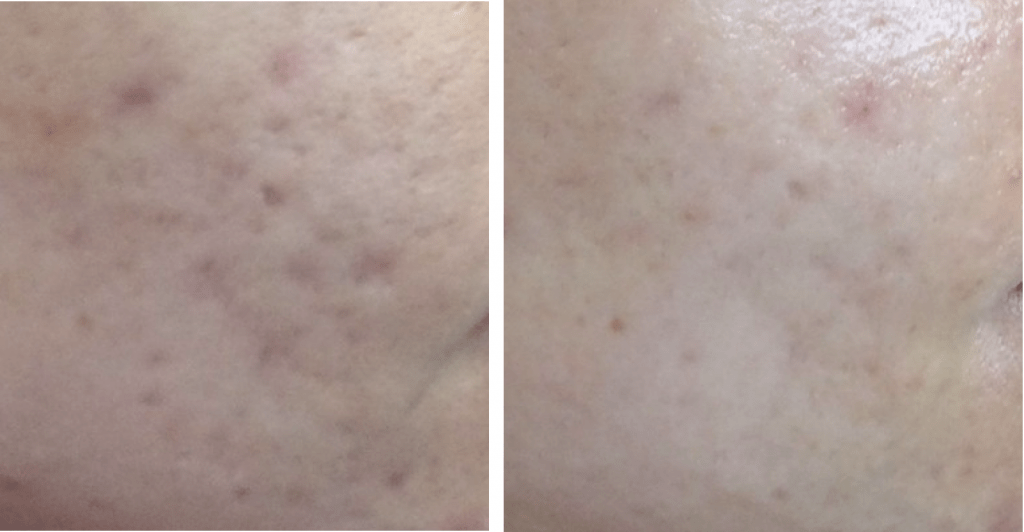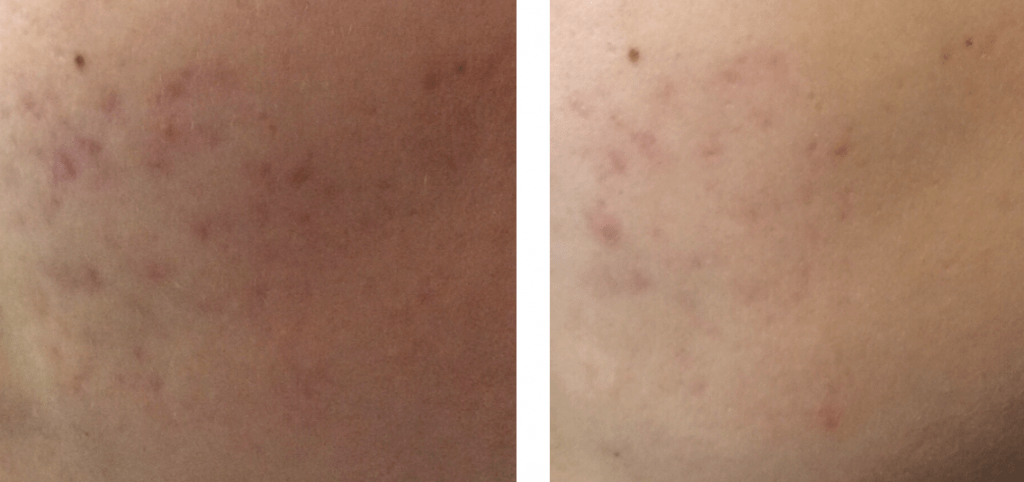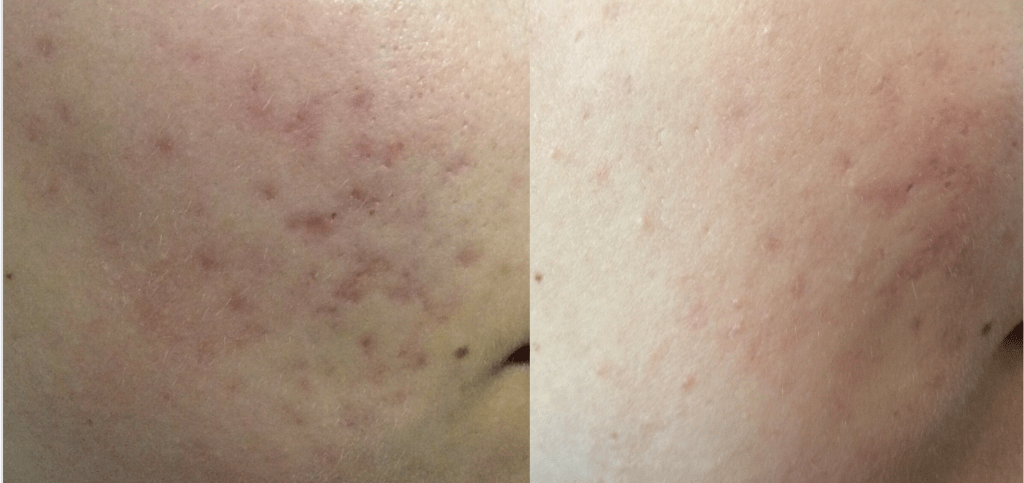Cheshire Lasers often receives enquiries asking how we can help treat scarring and acne scars.
Dr Teri Johnson discusses the various treatments available for scars and how they work.
What are Scars?
Scars develop after trauma to the skin; this can be due to an injury, post-surgery, or skin conditions such as acne. They are a natural part of the body’s healing process and occur when the skin’s deeper layers are damaged. This results in the formation of fibrous tissue to repair the injury. Scars may vary in appearance, texture, and size, depending on factors such as the type and severity of the injury, individual healing characteristics, and the scar’s location on the body.
When it comes to acne scarring, any type of acne spot can lead to scarring, but it’s more common when the most serious types of spots (nodules and cysts) burst and damage nearby skin. Scarring can also occur if you pick your skin or squeeze a spot, so it’s important not to do this.
While scars are permanent, they often fade and become less noticeable over time but may still remain visible.
Which Treatments Help Scars?
At Cheshire Lasers, we provide the following treatments for acne scarring:
- Polynucleotides
- Microneedling
- RadioFrequency Microneedling
- Rioblush Carboxytherapy
- Microdermabrasion
Other treatments you can consider include:
- TCA CROSS treatment
- Surgical Excision of scars
- Laser Treatments: can be ablative and non-ablative.
- Punch techniques
Sometimes, for best results, a combination of treatments is required.
Polynucleotides
Polynucleotide therapy is a new way to treat scars. It involves injecting special substances made of DNA and RNA into the scar tissue. Here’s how it works:
- Makes Skin Stronger: These substances help the skin make more collagen, which is like a building block that makes skin stronger and helps scars heal better.
- Helps Skin Repair: PN therapy helps damaged skin repair itself faster, making scars look better over time.
- Reduces Redness and Itching: Scars can be red and itchy because of inflammation. PN therapy can help calm down this inflammation, making scars less red and itchy.
- Makes Skin More Flexible: Scars often feel tight and stiff. PN therapy can make the skin more flexible by adding more collagen so scars feel softer and move better.
- Improves Scar Colour: Sometimes, scars are darker than the surrounding skin. PN therapy can help lighten the colour of scars, making them blend in better with the rest of the skin.
Polynucleotide injectable treatments are safe with very little downtime. They work well in combination with other treatments to enhance the results.
Overall, they strengthen the skin, helping it repair faster and reducing redness and itching. It’s a simple treatment that can make a big difference for people with scars.
Microneedling
Microneedling, also known as skin needling, involves using small needles to cause tiny punctures in the skin. These small contact points encourage the body to create a wound-healing response. The needling also can break down old scar tissue and stimulate the production of new skin cells. New collagen and elastin grow as the skin repairs to give a smoother, plumper skin surface.
This treatment also improves skin texture leading to smoother skin and reduces pores size and fine lines. Microneedling can also reduce pigmentation, which is sometimes seen with some scarring.
Before and after three microneedling treatments for acne scars at Cheshire Lasers.
RadioFrequency Microneeding
This treatment combines microneedling with radiofrequency energy. The combination treatment is much more effective than microneedling on its own. The radiofrequency energy heats the tissue in the region of 55 – 65°C and, depending on the depth, it stimulates cell renewal, new collagen, increased hydration and also skin resurfacing. The heat is more effective at stimulating fibroblast action, which is responsible for healing and repair.
Radiofrequency Microneeding is a more aggressive treatment than normal microneedling; however, surprisingly, the downtime is often much less. Here at Cheshire Lasers, we have found that fewer treatments are usually needed to deliver the same results.
Rioblush Carboxytherapy
Carboxytherapy is also a good treatment for treating acne scars. A tiny needle is used to inject Carbon dioxide into the scar. The same needle can also be used to gently subcise deeper scars, which allows blood to pool under the affected area. The blood clot helps form connective tissue, which pushes up the rolling scar so it’s level with the rest of the skin’s surface. Carboxytherapy also increases blood flow to the scar promoting healing, reducing redness and stimulating collagen and elastin production. The result is smoother, fresher, more healthy-looking skin.
Carboxytherapy can cause bruising but otherwise has very little downtime.
The following research paper compares carboxytherapy with microneedling.
At Cheshire Lasers, we sometimes combine microneedling with Carboxytherapy to achieve the best results.
Before and after three carboxytherapy treatments at Cheshire Lasers for acne scarring.
Microdermabrasion
Microdermabrasion involves deep exfoliation of the top layer of skin. Your skin will look red after treatment but will soon settle down.
Although this treatment claims to treat scars, it only helps with minor superficial scars, such as mild surface acne scarring.
You will need a course of treatments for the best results.
Other Treatments for Acne Scarring
The following treatments are also options for treating scars. These treatments are not available at Cheshire Lasers. However, we can recommend local clinics that provide them.
TCA CROSS treatment
TCA CROSS treatment involves the application of trichloracetic acid at high concentrations to the base of a scar. This causes trauma to the scar tissue, which triggers an inflammatory response that stimulates the production of new collagen. After each treatment, the scar gradually fills in from the bottom up and reduces in appearance.
This treatment is very useful for various Acne scars, including ice pick, box and rolling scars. It can also help with chickenpox scars and enlarged pores
View more information about TCA CROSS treatment from Dr Maeve Kenningham, who provides this treatment at her Wrexham Clinic.
Laser treatments
You can also consider Laser treatment to treat mild to moderate acne scarring. There are 2 types of laser treatment:
- Ablative laser treatment – where lasers cause skin trauma and remove some scar tissue, to produce a new, smooth-looking area of skin. This treatment can have significant downtime.
- Non-ablative laser treatment – where lasers are used to stimulate the growth of new collagen (a type of protein found in skin), which helps to repair some of the damage caused by scarring and improves the appearance
Punch techniques
Punch techniques are surgical methods that can treat ice-pick scars and boxcar scars. There are three types of punch technique:
- Punch excision – used to treat mild ice pick scars. The scar is surgically removed, and the wound is sealed, leaving smoother and more even skin.
- Punch elevation – used to treat boxcar scars. The base of the scar is surgically removed, leaving the sides of the scar in place. The base is then reattached to the sides but lifted up so it’s level with the surface of the skin. This makes the scar much less noticeable
- Punch grafting – is used to treat deep ice-pick scars. As with punch excision, the scar is removed, but the wound is “plugged” with a sample of skin taken from elsewhere on the body.
Surgical Subcision
Subcision is a surgical treatment which can treat deep rolling scars. The upper layer of the skin is removed from the underlying scar tissue, allowing blood to pool under the affected area. The blood clot helps form connective tissue, which pushes up the rolling scar so it’s level with the rest of the skin’s surface.
Once subscision has been completed, additional treatments are usually needed to improve the appearance of the scar further.

